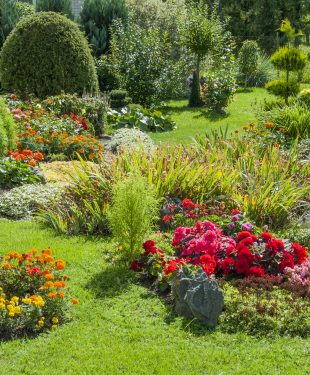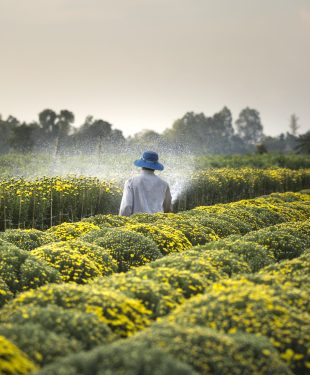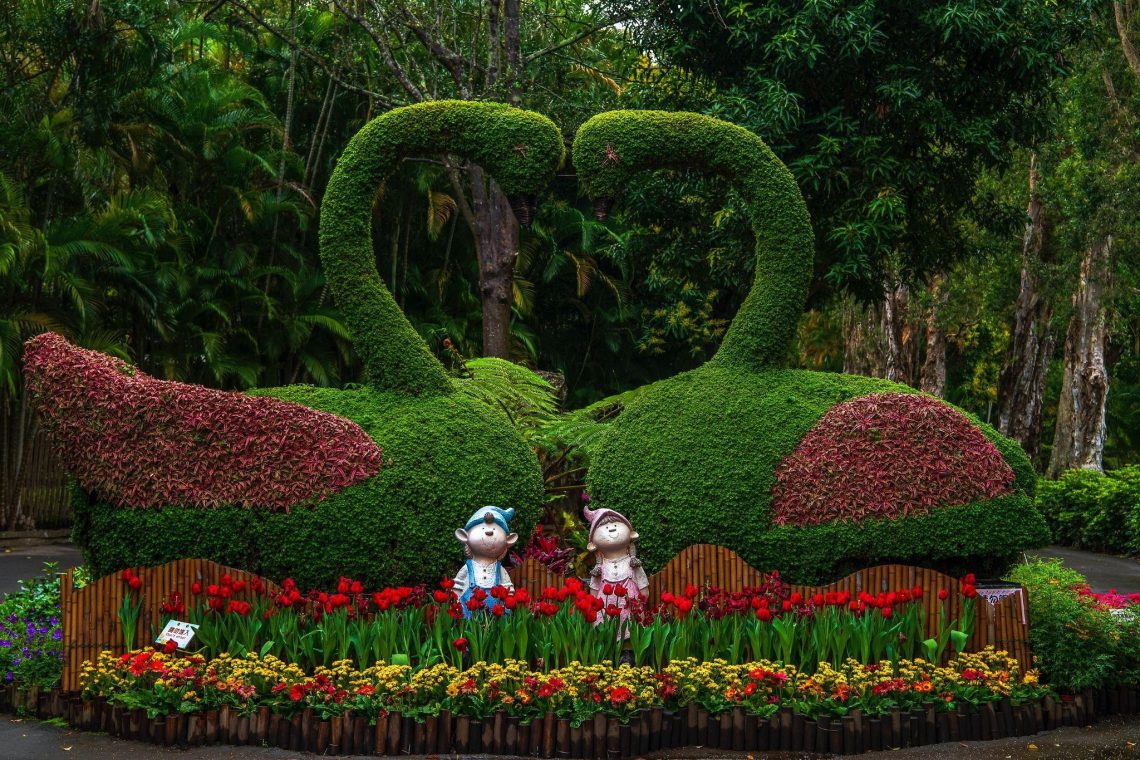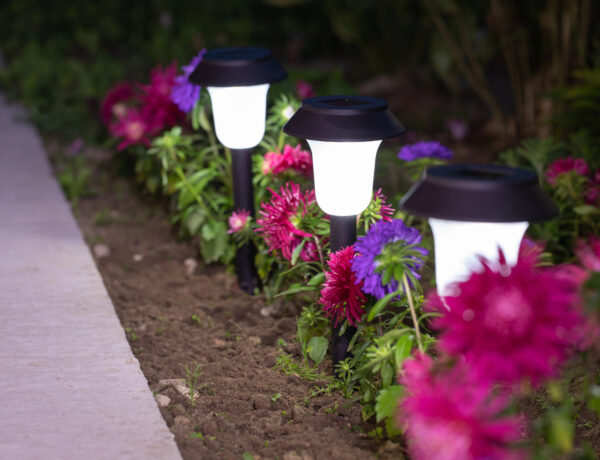Today we want to share tips on landscaping your garden. Creating a beautiful garden is the kind of thing that can be very exciting and give you an immense feeling of satisfaction; seeing your blank space turn into something gorgeous that everyone can enjoy is a fantastic feeling and one that a lot of people love – even if it’s not the only reason they like to spend time outside, it will certainly be part of the allure.
The great thing is that whether you have a tiny outside space or a huge, sprawling lawn, you’ll be able to do something to make it look better and really enjoy it all the more. Of course, there is a downside to this as well because it generally means you’ll have a lot of choice, and deciding exactly how to landscape your garden is a tricky challenge to overcome. The last thing you want is for this fun hobby to become an overwhelming and stressful part of your life. So with that in mind, here are some things to think about when it’s time to landscape your garden to ensure you don’t get lost and can create something lovely instead.
What Is Your Garden Like?
 Understanding the unique characteristics of your garden is the first step towards choosing the right options when it comes to landscaping. You’ll need to take note of your garden’s size, shape, and how it’s generally laid out. Is it flat or sloped? Are there any existing structures you need to be aware of, like trees or buildings? Can you keep them and use them in your design, or do you need to move them? What is the soil like? Where are the shady spots? There are many questions to ask, and they’ll all help you to narrow down your design ideas.
Understanding the unique characteristics of your garden is the first step towards choosing the right options when it comes to landscaping. You’ll need to take note of your garden’s size, shape, and how it’s generally laid out. Is it flat or sloped? Are there any existing structures you need to be aware of, like trees or buildings? Can you keep them and use them in your design, or do you need to move them? What is the soil like? Where are the shady spots? There are many questions to ask, and they’ll all help you to narrow down your design ideas.
You’ll want to use the garden space you have in the best way, and you won’t want to make it cramped and messy, and by working with what you have, you can really make the most of your garden. For example, a sloping garden can be transformed into a terrace with lots of levels and retaining walls, and a smaller space could benefit from vertical planting or containers. No matter what kind of garden you have, you should use what’s there as the starting point for your landscaping.
Who Will Use The Garden?
Another good idea to help you decide what your landscaped garden should eventually look like is considering who is going to use the space. Do you have children or pets who need to go outside and need a place to run around in? Are you an entertainer who wants a place for friends and family to gather and perhaps even a place for you to cook food outside? Again, there are many questions, and understanding the needs and preferences of the people who will use your garden the most will mean you can design a space that works for everyone.
For those with young children, including a play area is a great idea as you can make sure it’s safe and just right for their age, and they’ll always have a place to go outside to get some fresh air even if you’re not able to take them to the park or out for the day. For pet owners, why not have an area of your garden fenced off so your pet can use it how they want to, and you can keep the rest of your outside space looking magnificent? If you love hosting social gatherings, think about adding a designated seating area or even an outdoor kitchen. In other words, by thinking of who is going to use your garden, you can design a space that’s functional, inviting, and perfectly suited to your needs.
Do You Need Help?

Photo by on Pexels
Landscaping your garden can be a fantastically fulfilling DIY project, but it’s important to know when you might need some help from experts or from willing volunteers. Think about the size of the job at hand compared to your skill level and how much time you have, and it might be obvious that calling on experts like those at Masterscapes.com is the best thing you can do. And if there are some difficult aspects of the job, which might include installing irrigation systems, grading the garden, or building complex structures, it won’t matter how good you are or how much time you have, you’ll definitely need the professionals to ensure everything is done in the right way, and in a safe manner.
If you feel as though you’re not getting anywhere, or you don’t have any ideas, or the whole thing is just getting too stressful, again, it’s time to call for help. Speak to experts if the job is a big and complicated one, or rope in your friends and family to give you a hand if it’s simpler (although, of course, landscapers can do it all). The key is to be honest. Even if you intended to do everything yourself, if you find you need help, it’s not a sign of weakness, and it will give you the best results, so it’s always best to ask.
Do You Want A Theme?
Choosing a theme for your garden can add a touch of personality and a general cohesiveness to your design ideas, so it can sometimes be an ideal thing to do (although it’s not vital – the choice has to always be yours). If you do want a theme, it can set the tone for the garden and create something visually interesting to enjoy, not to mention the fact that it might narrow down your choices when it comes to what to include and what to leave out. Whether you prefer a rustic cottage garden, a sleek modern oasis, or a tropical paradise, choosing a theme will help you make the right choices to bring your vision to life.
To come up with the right theme for your garden, you can take inspiration from your surroundings, personal interests, or just some gardens you’ve seen when you’ve been out and about – inspiration can really come from anywhere. One thing to think about, however, is the architectural style of your home, as you’ll want to make sure the garden works with it, not against it.
A theme can be something as simple as a colour scheme that links all the plants and the decor, or it can be much more intricate, such as replicating a specific garden you’ve seen elsewhere (or even a famous historical one). The theme should be a roadmap for your overall design, and it should always be something you love because you’ll be happy with it and spend more time in the garden if you enjoy the space, and that’s the point of making it look great.
Adapting Landscaping to Local Climate Conditions
When planning your garden landscape, it’s crucial to consider the specific climate and environmental factors of your area. For example, residents seeking lawn care services in Queen Creek AZ face unique challenges due to the hot, arid desert climate. Local landscaping experts in this region specialize in xeriscaping techniques, utilizing drought-tolerant plants like succulents and cacti that thrive in low-water conditions. They can also advise on efficient irrigation systems, such as drip irrigation or smart sprinklers, to conserve water while maintaining a lush garden.
Additionally, these professionals understand the importance of creating shade with strategic tree placement and incorporating hardscaping elements like rock gardens or gravel pathways that complement the natural desert aesthetic. By working with knowledgeable local landscapers, homeowners can create beautiful, sustainable outdoor spaces that are well-adapted to the Arizona heat and soil conditions, enhancing both the visual appeal and functionality.
What About The Future
While planning your garden, it’s important to consider the future. How will your garden change over time, and what maintenance will you need to do to keep it looking how you want it? It might be that it looks wonderful now, but when the plants really start to grow, the entire look might change, and you need to be ready to embrace that change or do something about it.
You should also make sure there is room for expansion because you might want to add things or change them as time goes by, and at the very least, the plants you planted will grow and need more room. And why not consider eco-friendly and sustainable elements? You could include water-saving techniques like rainwater harvesting or only use native plants as they need less water anyway – this is great for the future of your garden and the planet.
Read more home and garden articles at ClichéMag.com
Images provided by BingAI, Adobe Stock, Flickr, Unsplash, Pexels, Pixabay & Creative Commons




